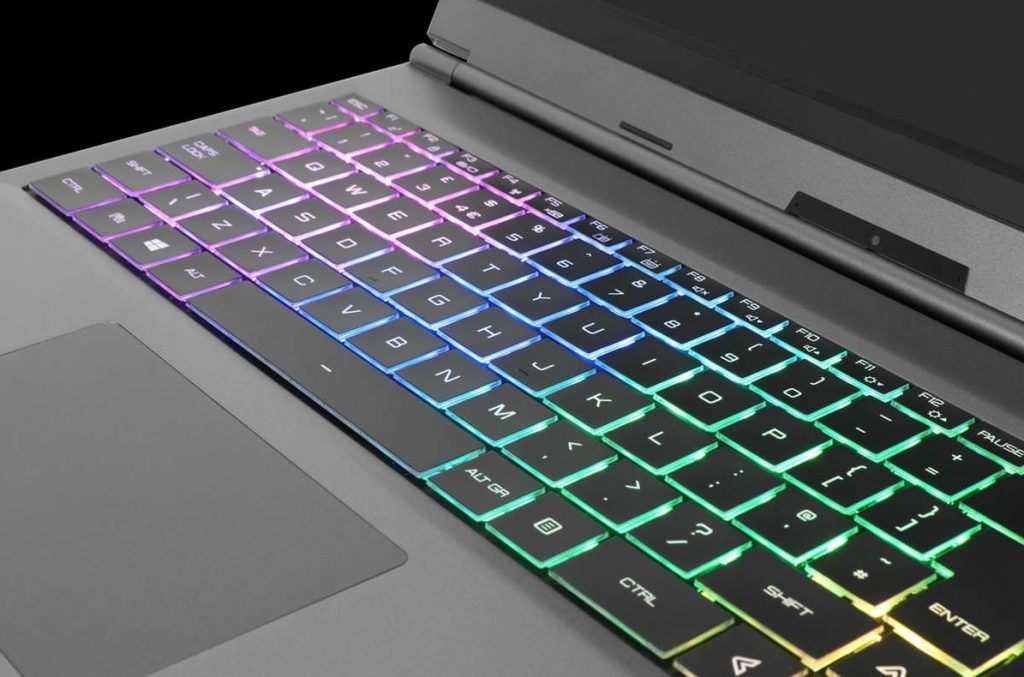Keep your keys germ-free and looking brand-new

According to research done by IT company CBT Nuggets, your laptop’s keyboard could carry 20,000 times more bacteria than your toilet seat. And with so much of your work, school, socializing, and entertainment now taking place online, you’re probably using your laptop more than ever.
Whether you’re struggling with crumbs, dust, fingerprints, pet hair, or sticky residue, you should be able to clean your keys with materials you already have lying around. And if you share a device with other members of your household, you can prevent the spread of germs as well. It’ll just take a few minutes out of your day, and your keyboard will look brand-new.
Here’s what to do.
TURN IT OFF
Before you get started, turn off your computer. You don’t want to accidentally hit a hotkey combination that leads to disaster. Unplug it, as well, to reduce the risk of shorting something if any moisture gets inside. And make sure you have everything important backed up in case something goes horribly wrong. (This is, of course, good practice whether you’re cleaning your keyboard or not.)
GET RID OF CRUMBS
To clear out the biggest crumbs, dust, or other debris that wandered into your keys, turn your laptop upside-down and allow them to fall out. Gently tap the bottom of the chassis to dislodge any stubborn particles. You can also press cleaning slime into the spaces between your keys, which sticks to and picks up debris.
If that doesn’t get everything, give the keyboard a once-over with a vacuum. Make sure that you use a small attachment and the lowest power setting. (The last thing you want is to suck up one of your keycaps.) If you have a small handheld vacuum, even better.
You can also use a can of compressed air. Spray the air in a zigzag pattern so you don’t miss any nooks and crannies, and make sure you hit all sides of each key. If you don’t have compressed air, you can try another device that blows air (such as a blow dryer). Do not spray air directly under the keycaps; it could damage delicate electronics.
If you’ve done all of this and still have some gunk under your keys, you may need to pop the keys off. Whether you can do this will depend on your laptop model. In some cases, it won’t be possible to do without breaking the keys, and you’ll want to speak to a professional. If you need to remove your keycaps, look up your laptop model and follow the manufacturer’s instructions.
If that doesn’t get everything, give the keyboard a once-over with a vacuum. Make sure that you use a small attachment and the lowest power setting. (The last thing you want is to suck up one of your keycaps.) If you have a small handheld vacuum, even better.
You can also use a can of compressed air. Spray the air in a zigzag pattern so you don’t miss any nooks and crannies, and make sure you hit all sides of each key. If you don’t have compressed air, you can try another device that blows air (such as a blow dryer). Do not spray air directly under the keycaps; it could damage delicate electronics.
If you’ve done all of this and still have some gunk under your keys, you may need to pop the keys off. Whether you can do this will depend on your laptop model. In some cases, it won’t be possible to do without breaking the keys, and you’ll want to speak to a professional. If you need to remove your keycaps, look up your laptop model and follow the manufacturer’s instructions.
DISINFECT AND REMOVE SMUDGES
Next, clean the surface of the keyboard itself to eliminate germs, smudges, and stains. First, wipe everything down with a disinfectant wipe. Avoid any wipes that contain bleach. If you don’t have wipes, a soft cloth with some rubbing alcohol can also work. Wipe the keycaps one at a time, as well as the areas between them, to make sure you get every spot.
You want to avoid getting any liquid under the keys, so don’t use any cloth that’s dripping wet. If needed, wring your wipes out before you use them. Do not spray water or any cleaning liquids directly on the keyboard.
Next, go over everything with a damp cloth (again: damp, not dripping). Ideally, you’ll want to use a microfiber cloth. If you don’t have one, another cloth is okay. Try to avoid anything abrasive that could scratch the keys, like a paper towel.
Finally, dry the area off with another soft cloth. There you go — all clean!


Lisalot 22 Dec 2020
[url=https://cialistrm.com/]lowest price cialis[/url]